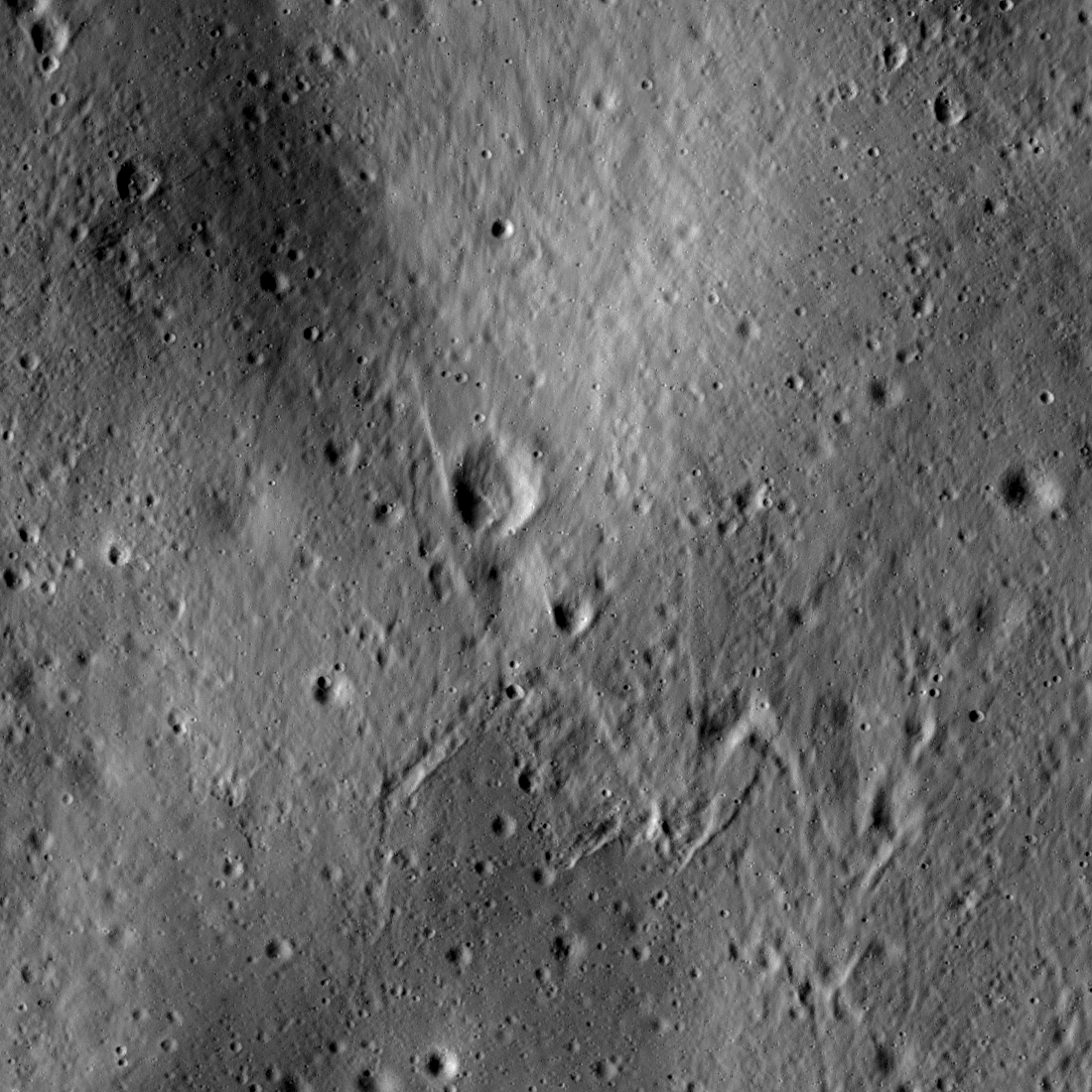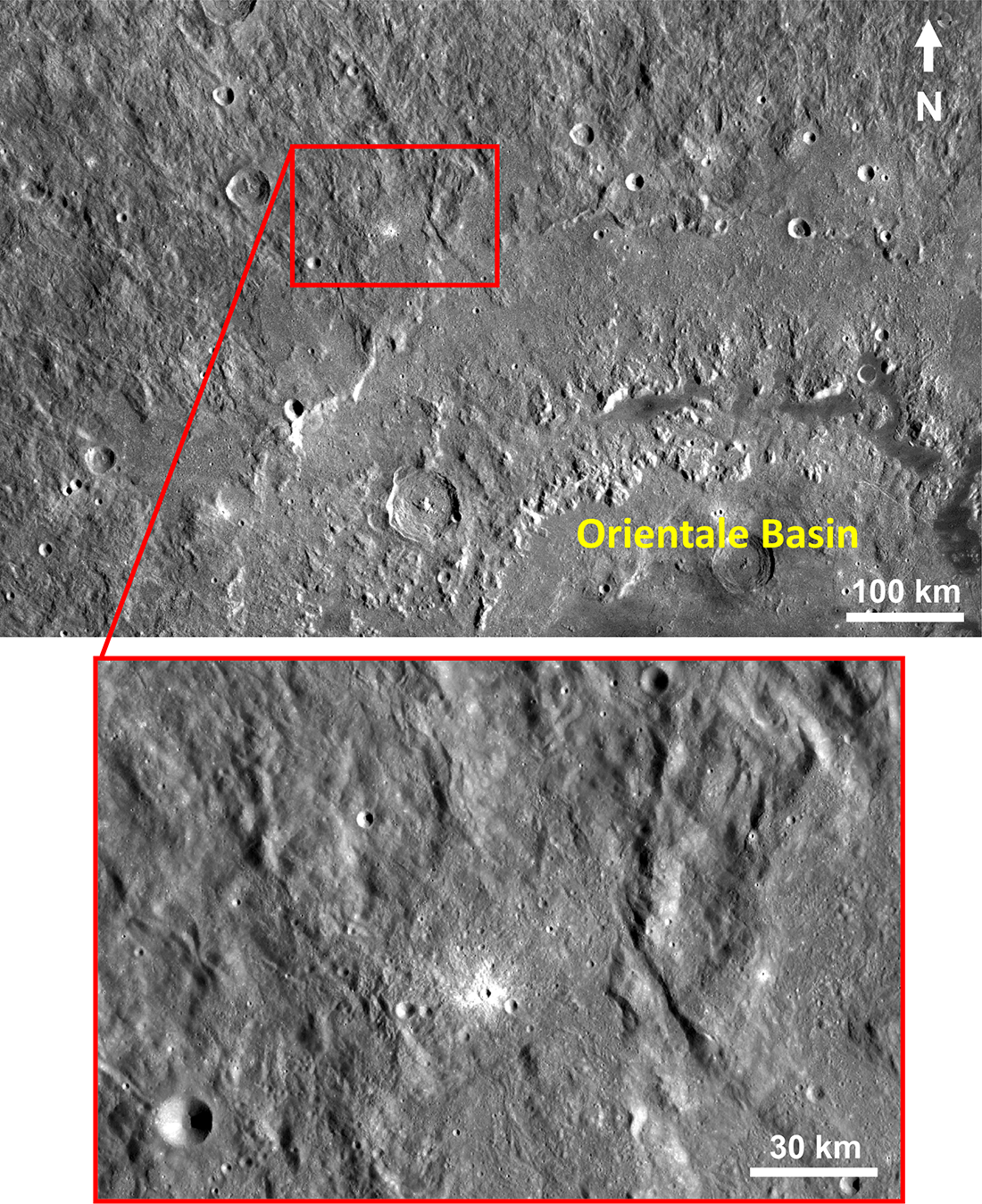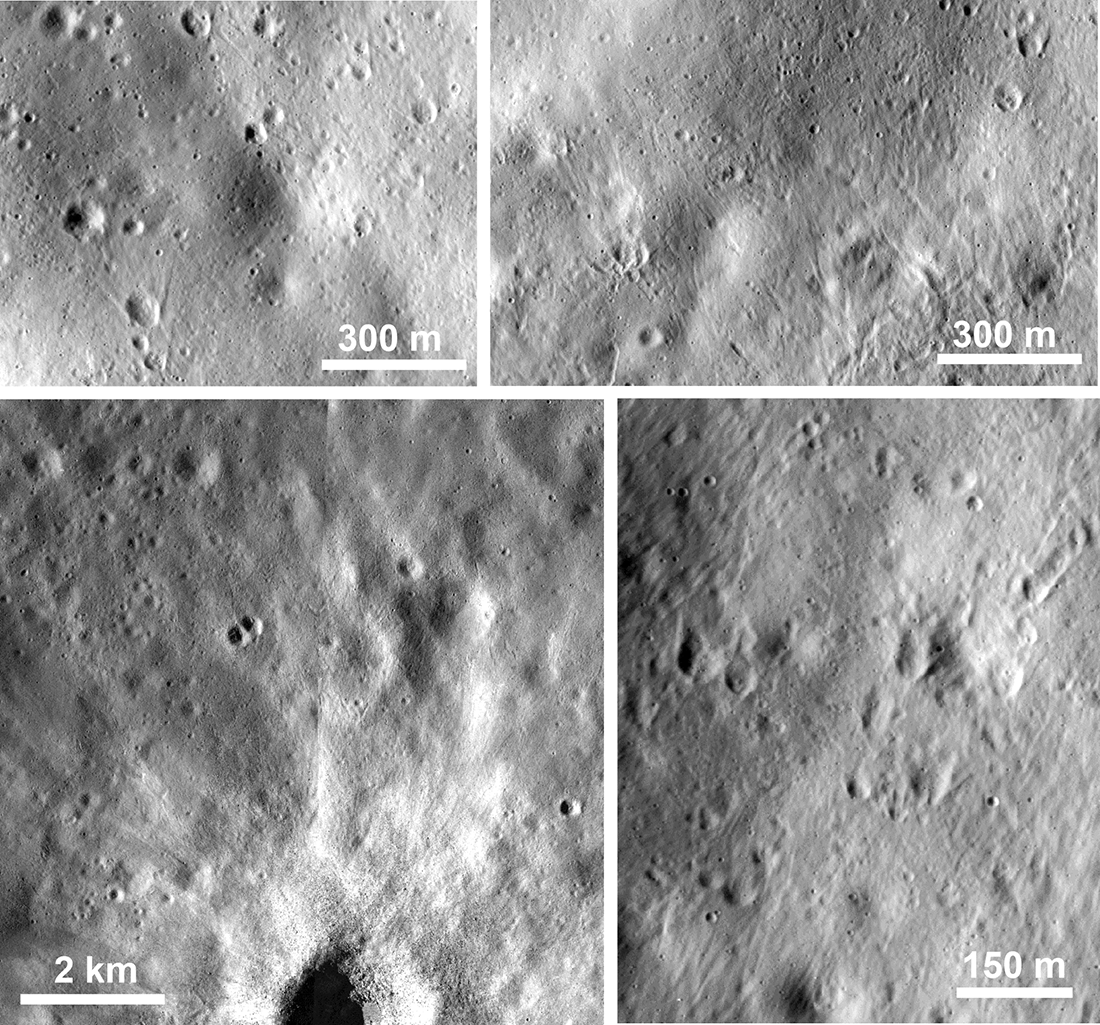
Secondary craters form when material from a primary crater (formed when a meteoroid or comet hits the Moon) is ejected and then impacts the Moon. Such craters can often be identified by their distinctive features, including v-shaped ejecta that points back to the primary crater, or asymmetrical shapes, with the rim farther away from the primary crater less well-formed than the closer rim. Can you tell which direction the primary crater is for the above secondary craters?

The directional indicators of these secondary craters (and their general size and freshness) allow us to trace them back to a small, bright primary crater. In fact, there is an entire field of beautiful, fresh ejecta, rays, and secondaries around this small primary. This ejecta is a record of the processes that occur during an impact event. Secondary craters can be used to estimate the size and velocity of ejected fragments.
In the case of the largest secondary crater in the opening image, it was formed by a fragment of ejecta that was approximately 30 m across, resulting in the 90 m diameter crater. The distance of the secondary craters from the primary crater enables an estimate of the ejection velocity. The secondary craters in the opening image formed as debris impacted at about 160 m/s, which is about 360 miles per hour or around 2.3 times faster than the fastest recorded tennis serve.

A 2020 paper from LROC team members (Singer et al., 2020) investigated the distinct secondary fields of six primary craters across a wide range of sizes. This work provided new information about how surface material fragmentation and ejection occur during impact events and refined estimates of the largest size secondary crater at a given distance from a primary crater, which has implications for understanding the ages of surfaces on the Moon (secondary craters must be excluded when comparing the density of craters on a surface to estimate its age). An additional and fun implication of this study was new insight into the size of fragments that can be ejected at escape velocity and later end up as lunar meteorites found on the Earth.
Check out the full paper from the LROC team: Singer, K. N., Jolliff, B. L., & McKinnon, W. B. (2020). Lunar secondary craters and estimated ejecta block sizes reveal a scale‐dependent fragmentation trend. J. Geophys. Res., Planets, 125(8), e2019JE006313. doi:10.1029/2019JE006313
Published by Brett Denevi on 5 May 2022